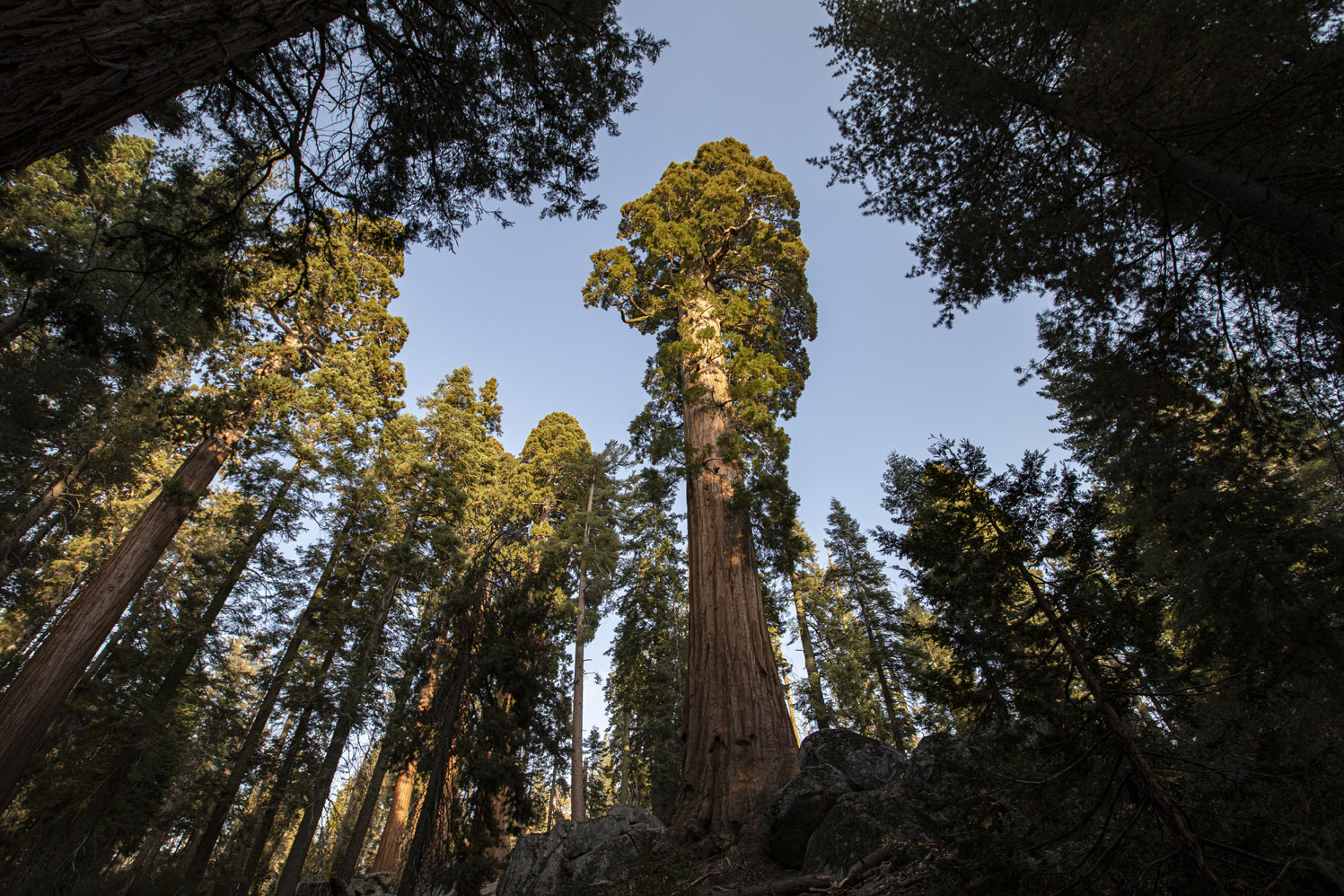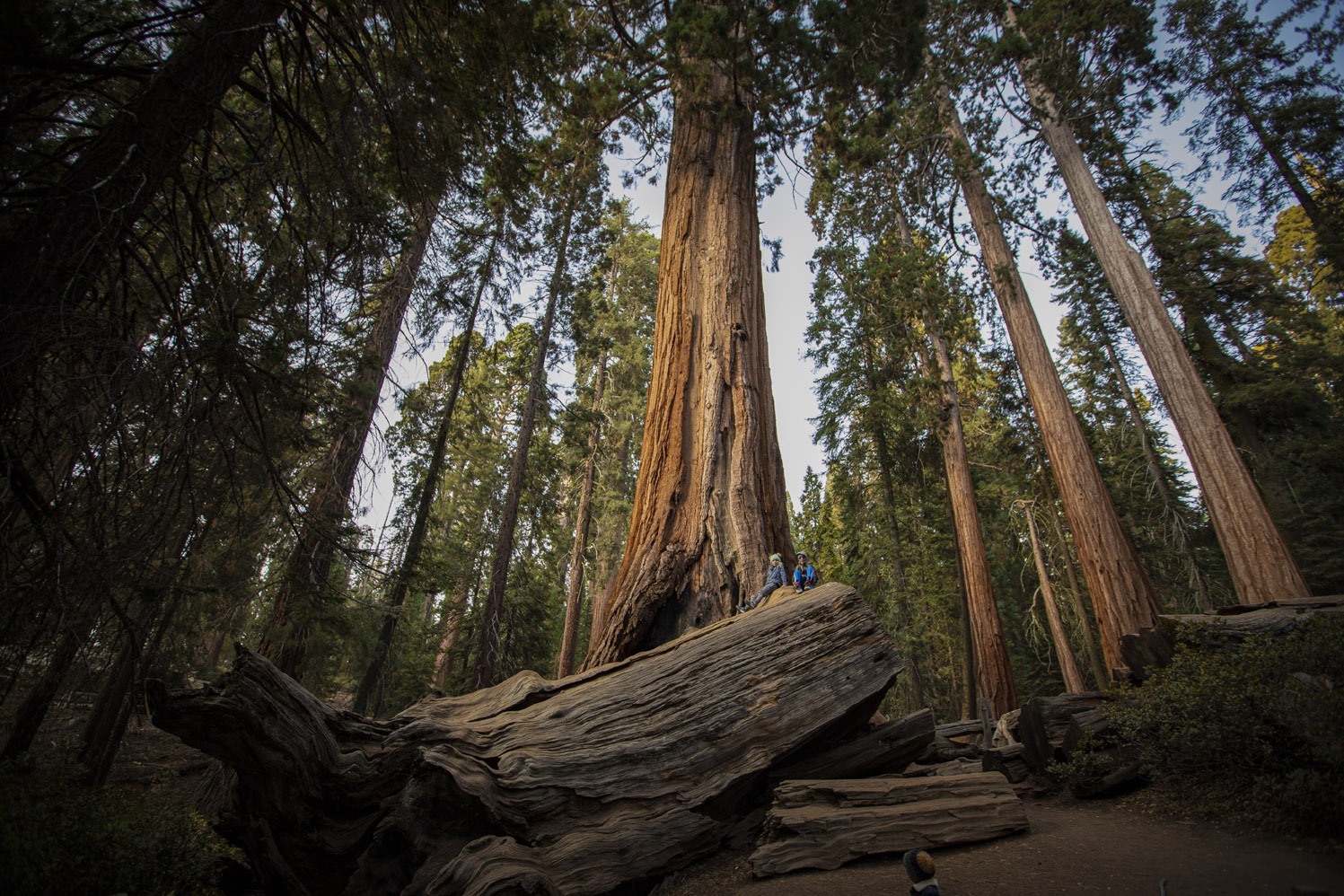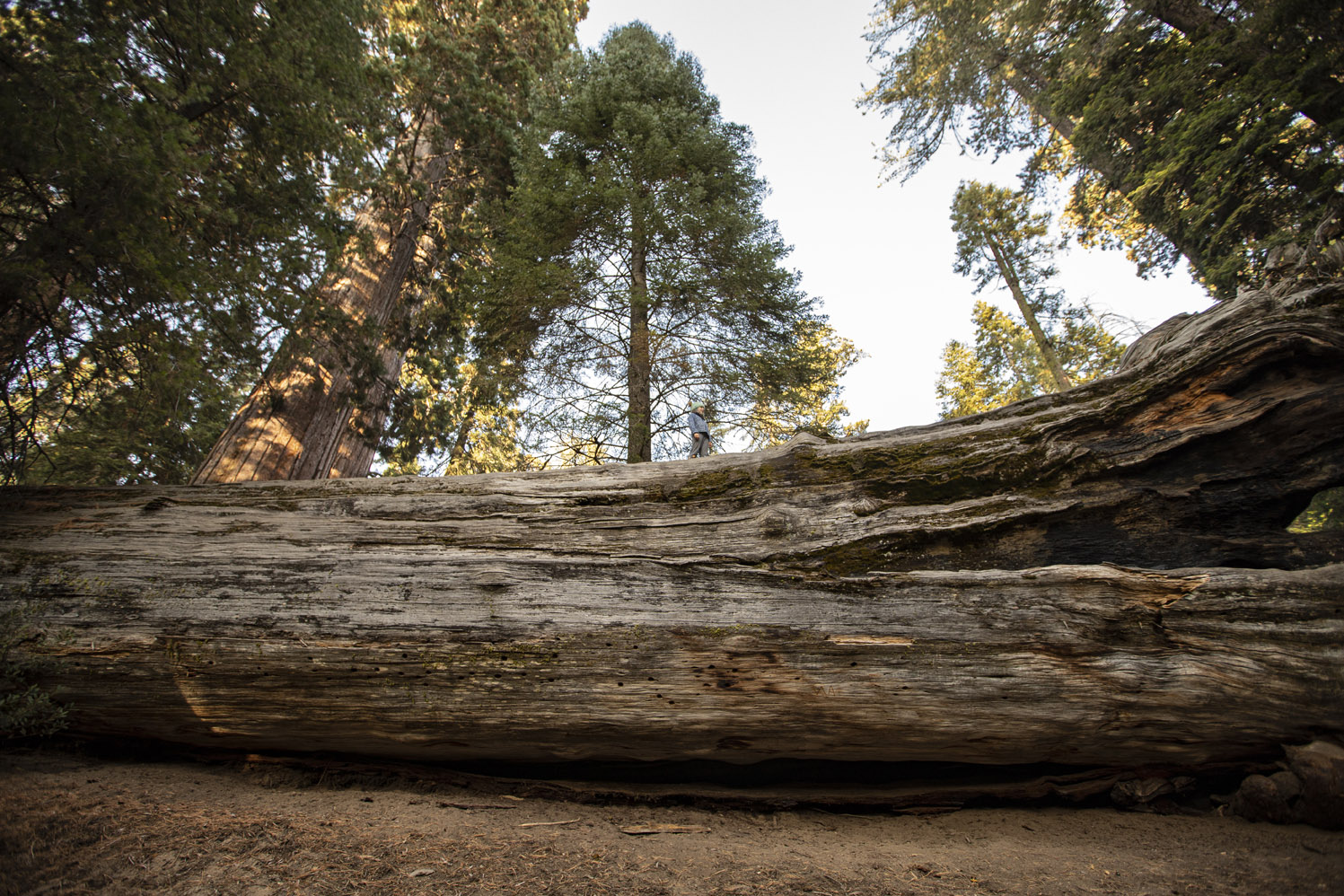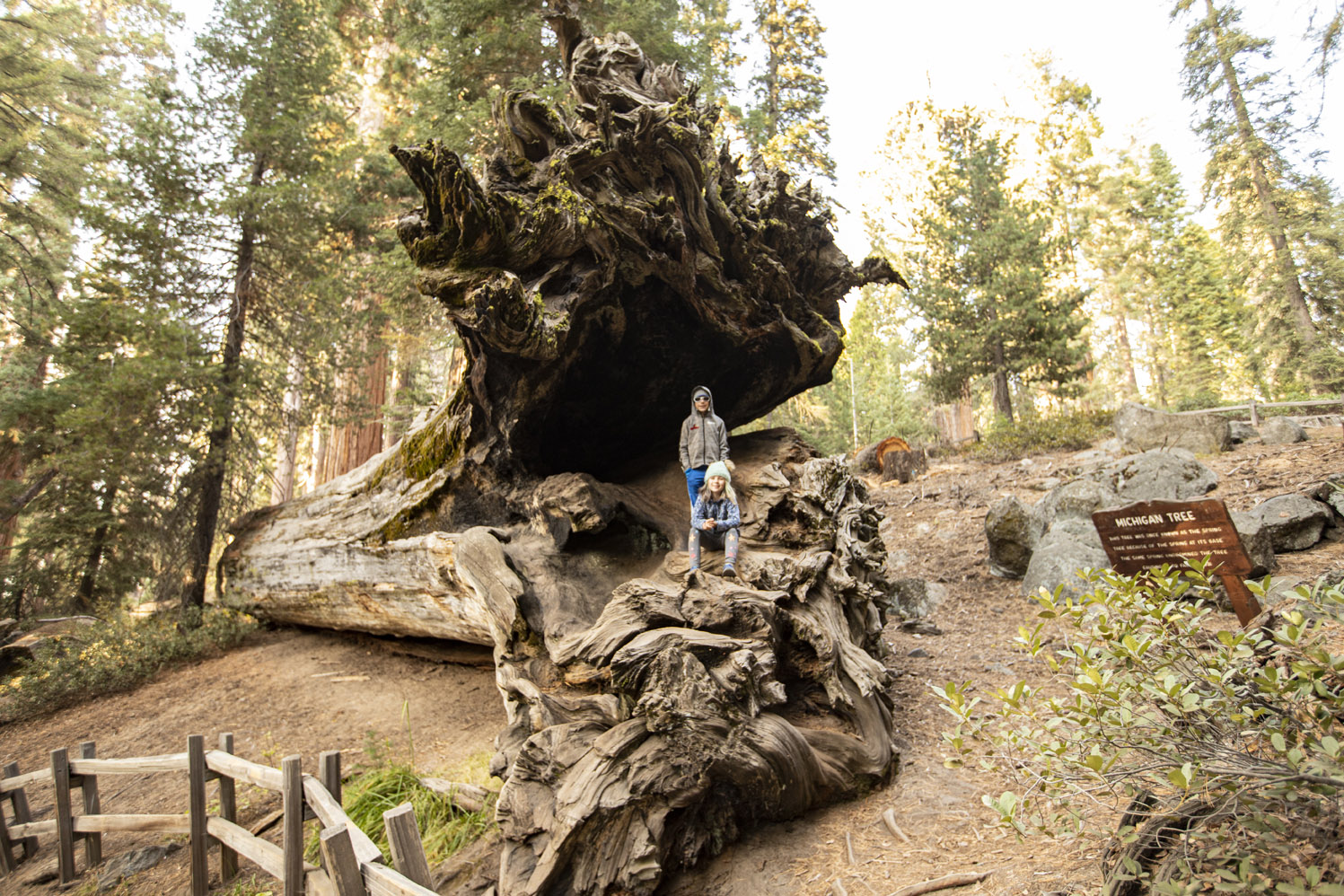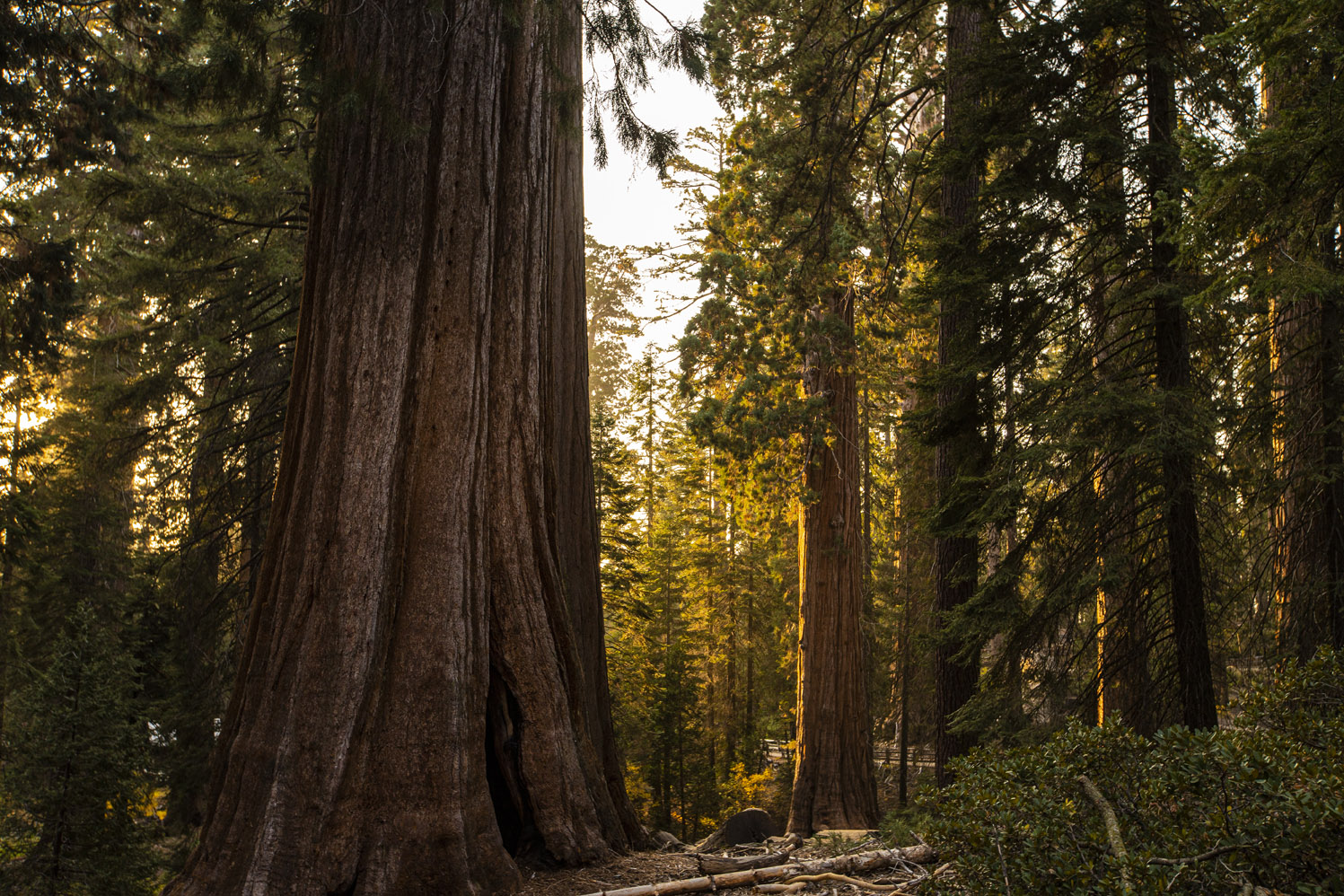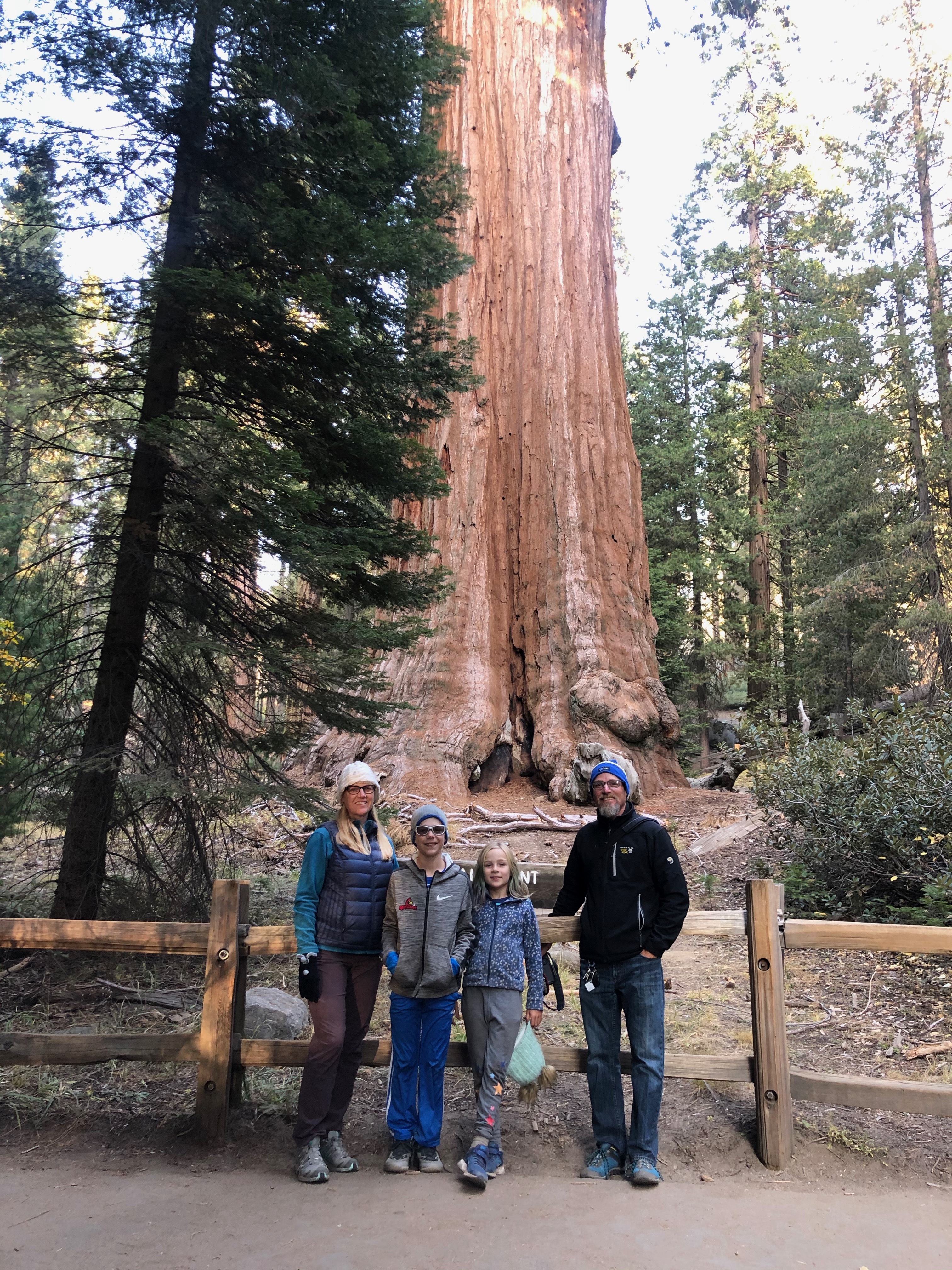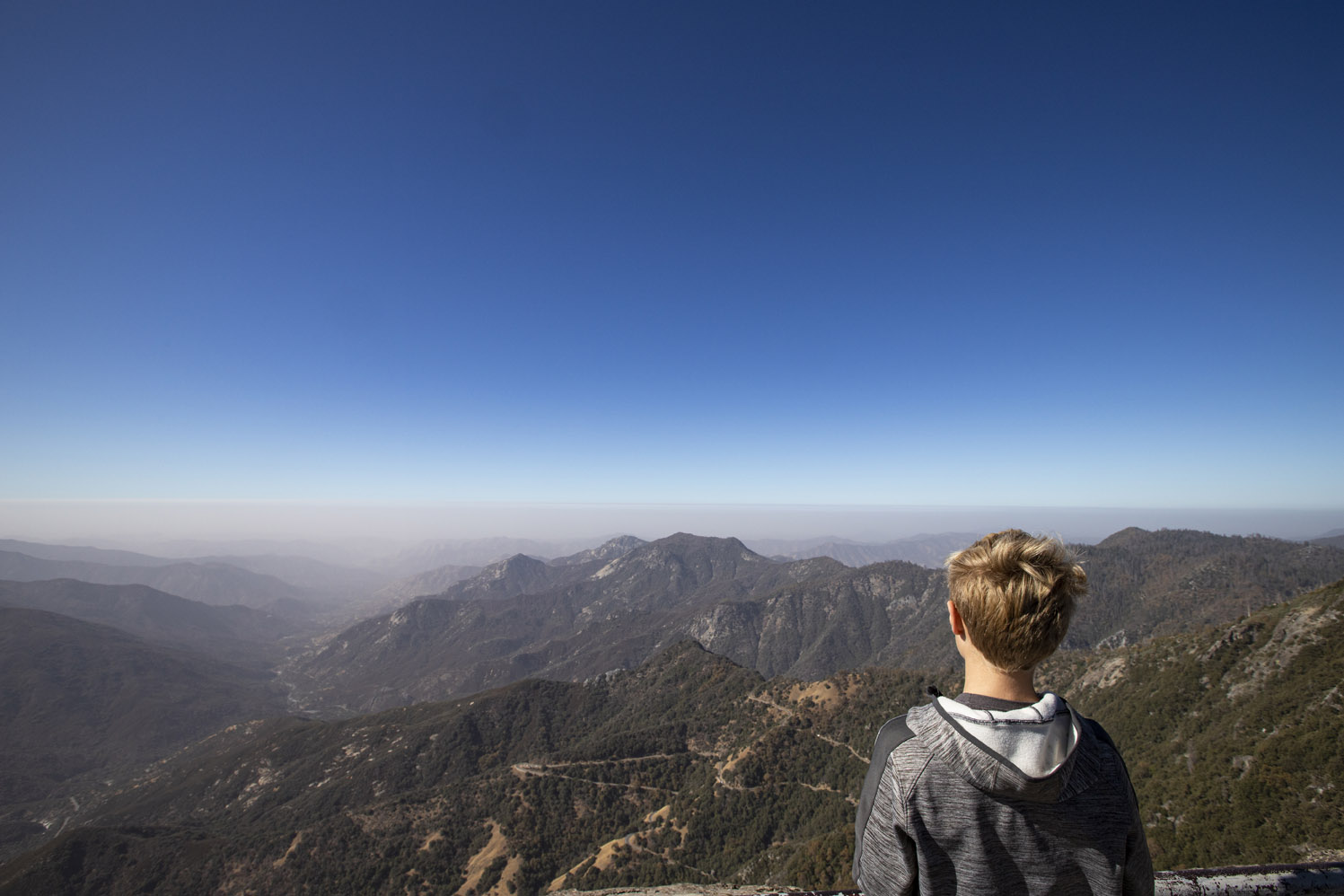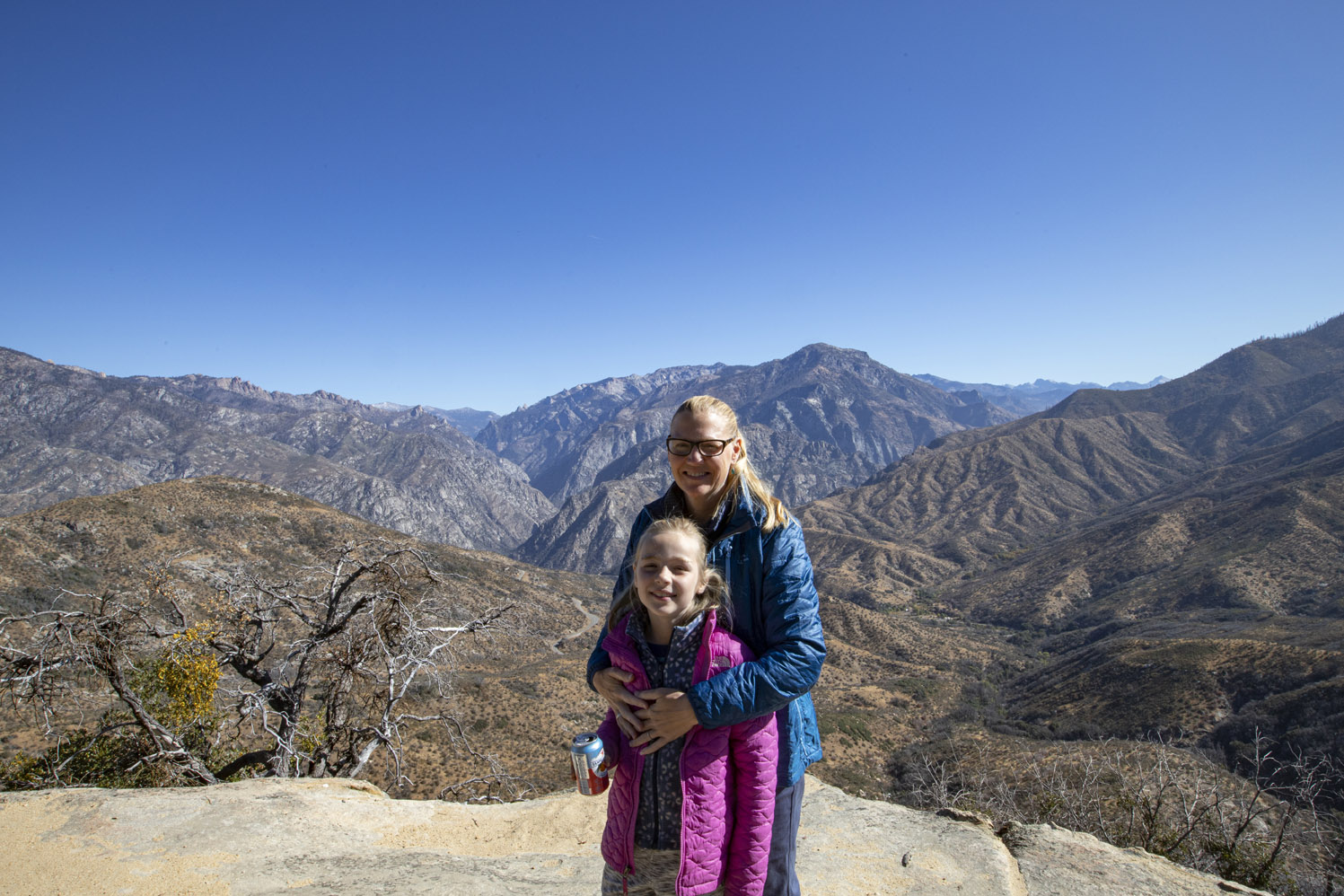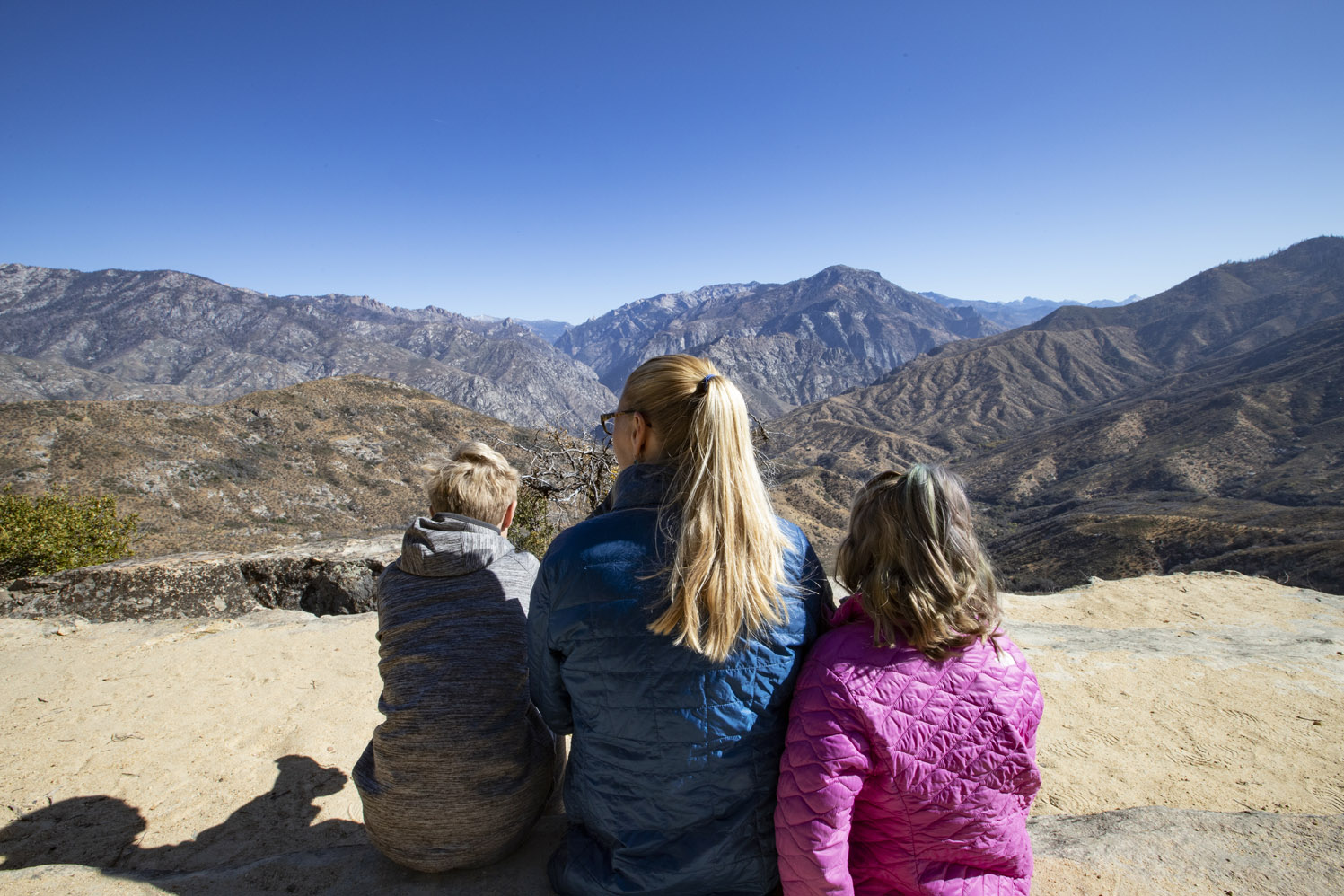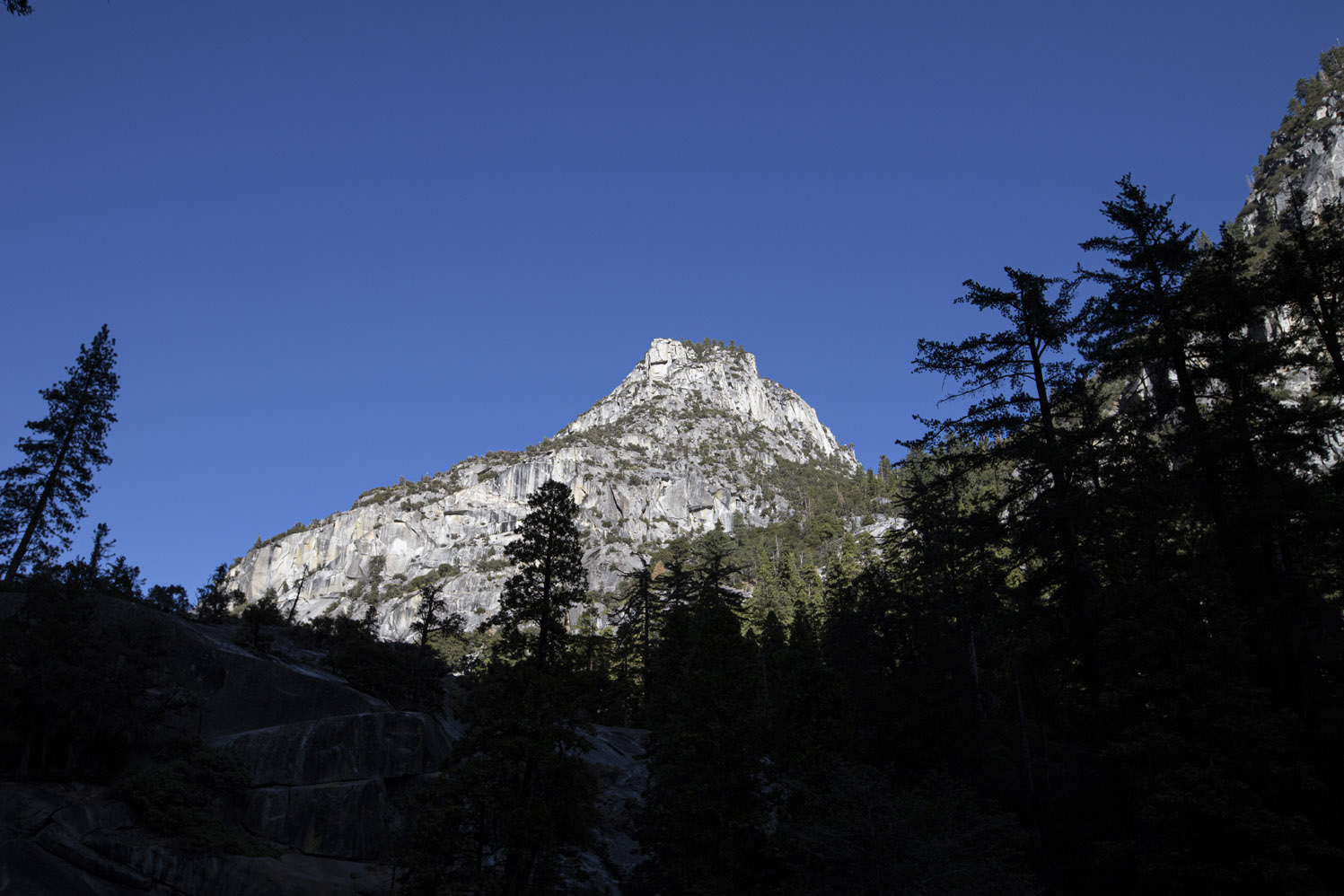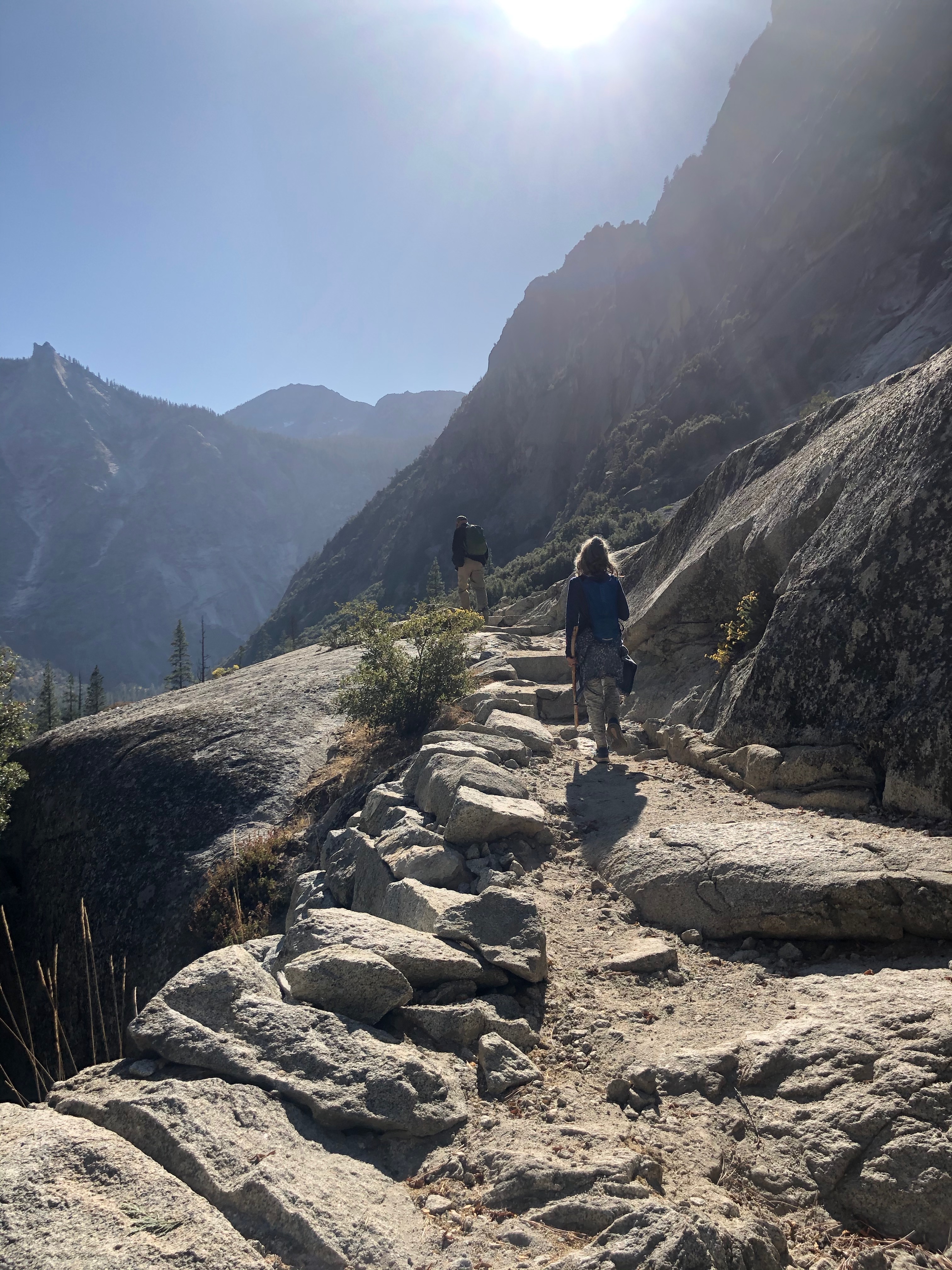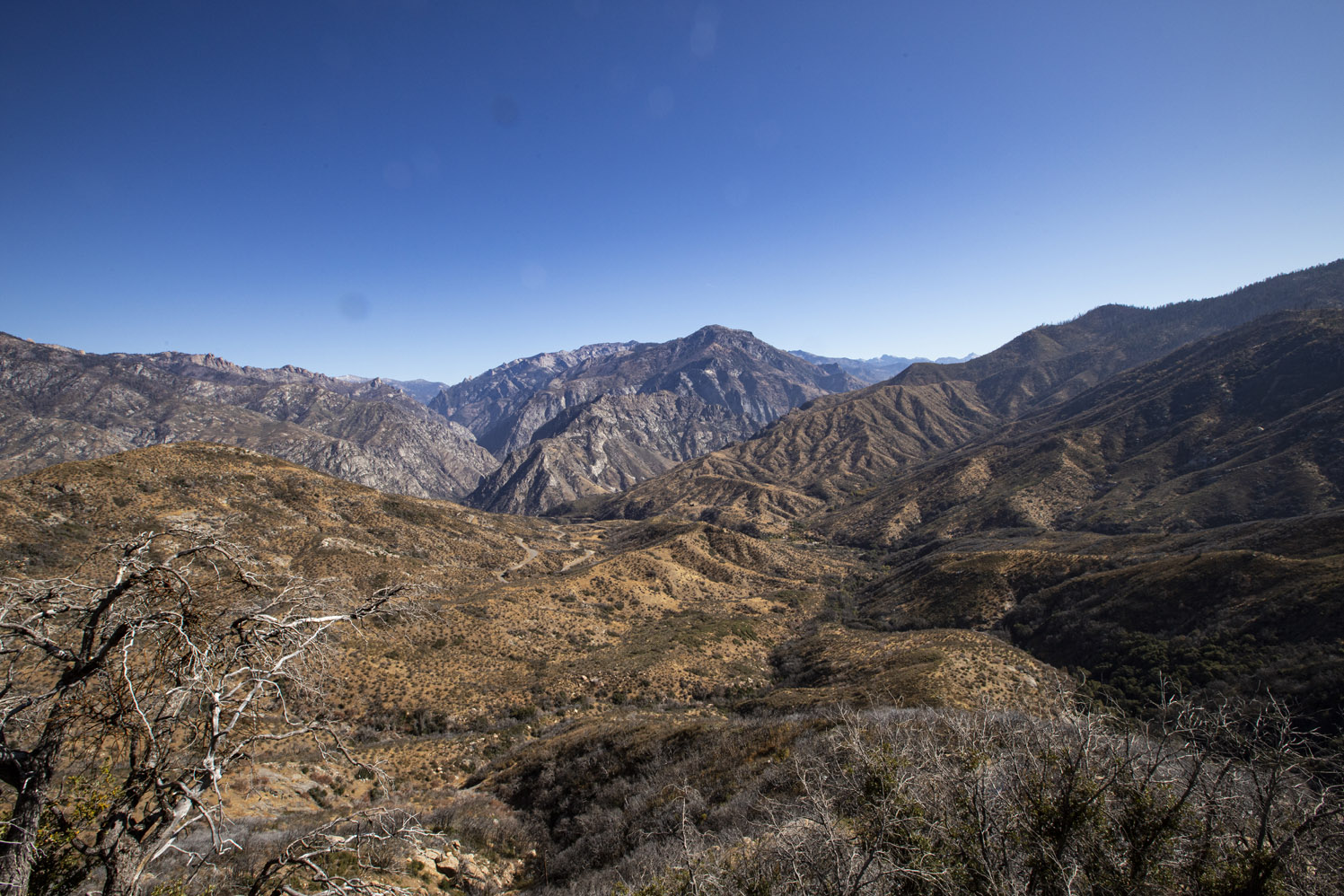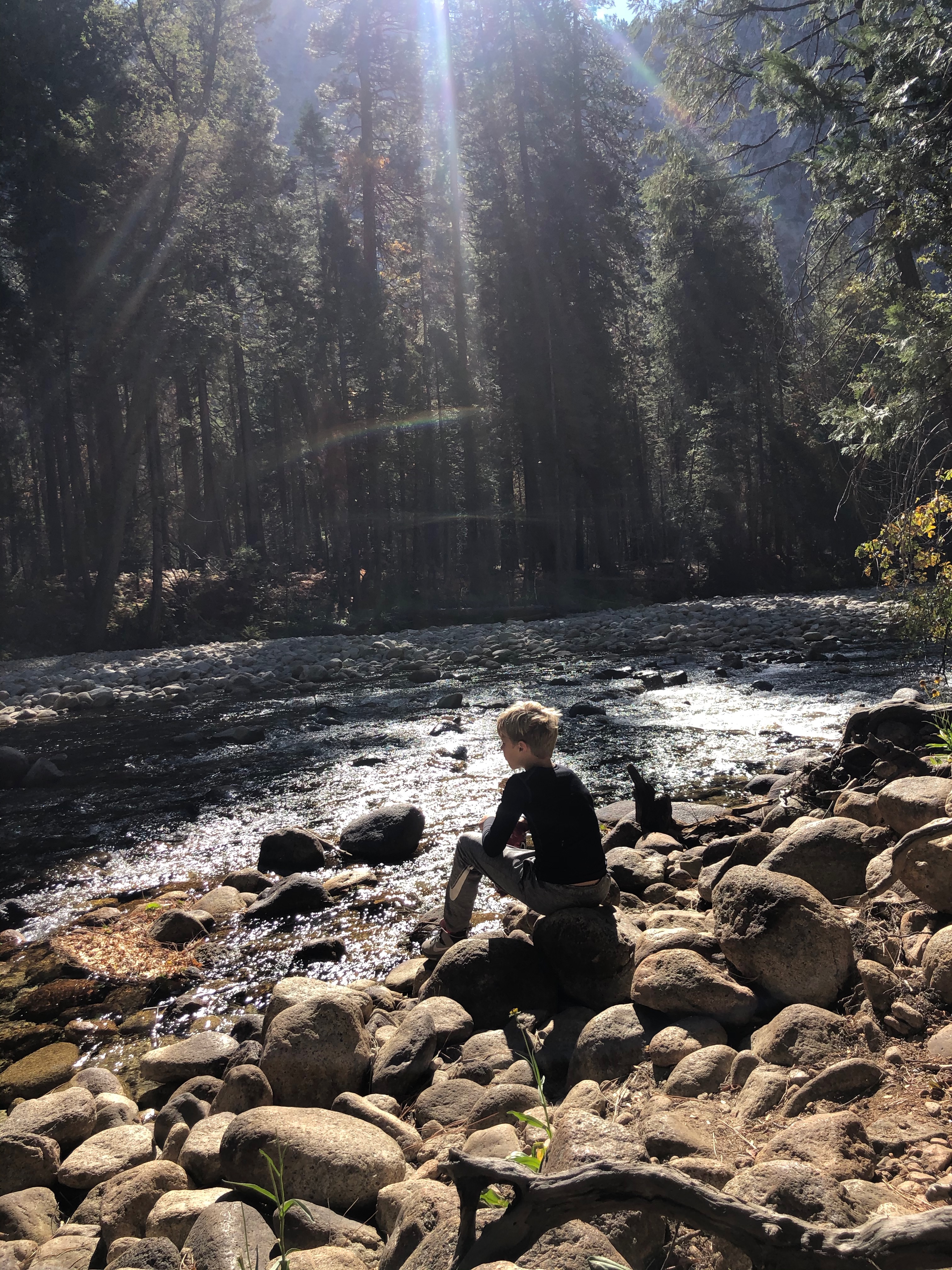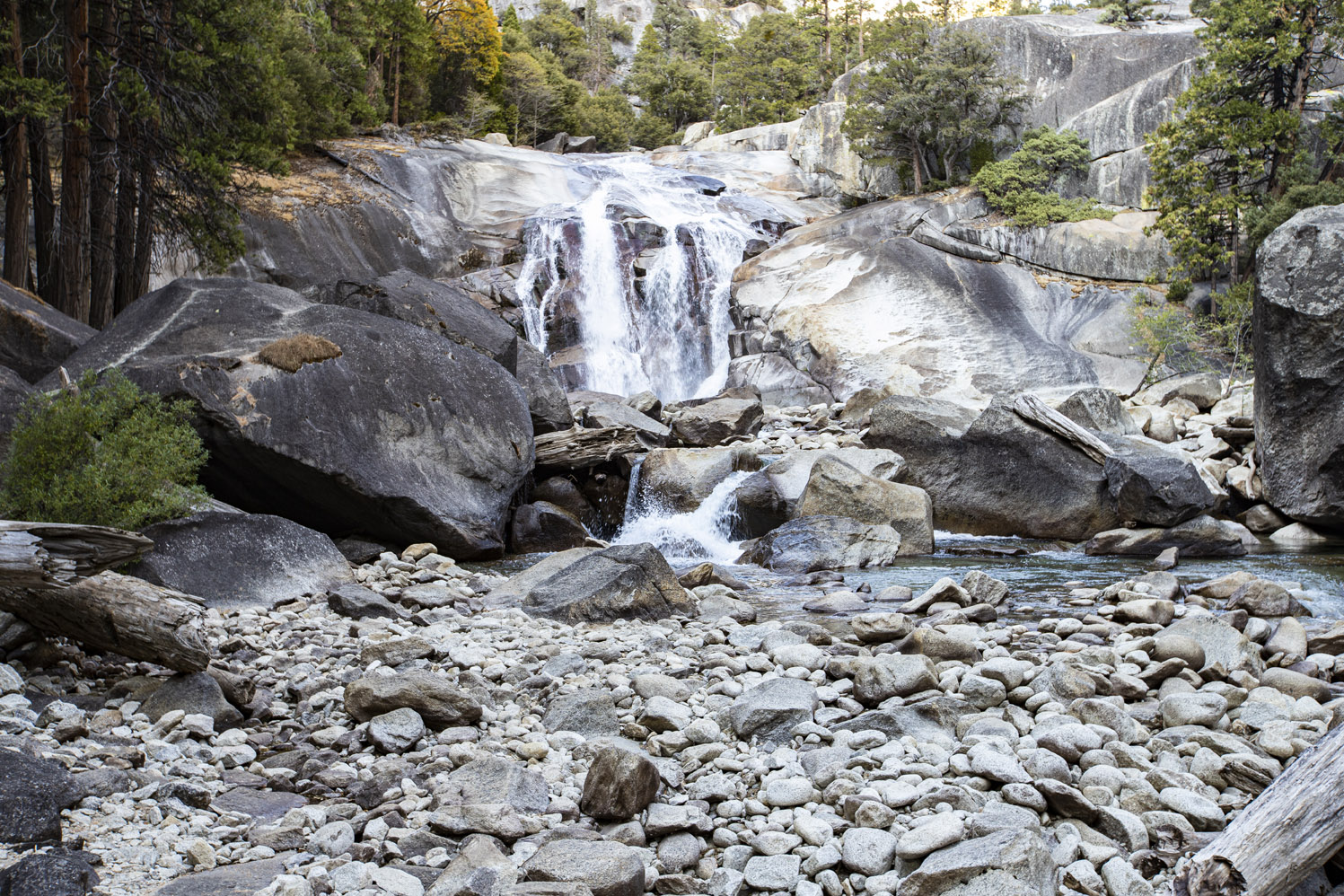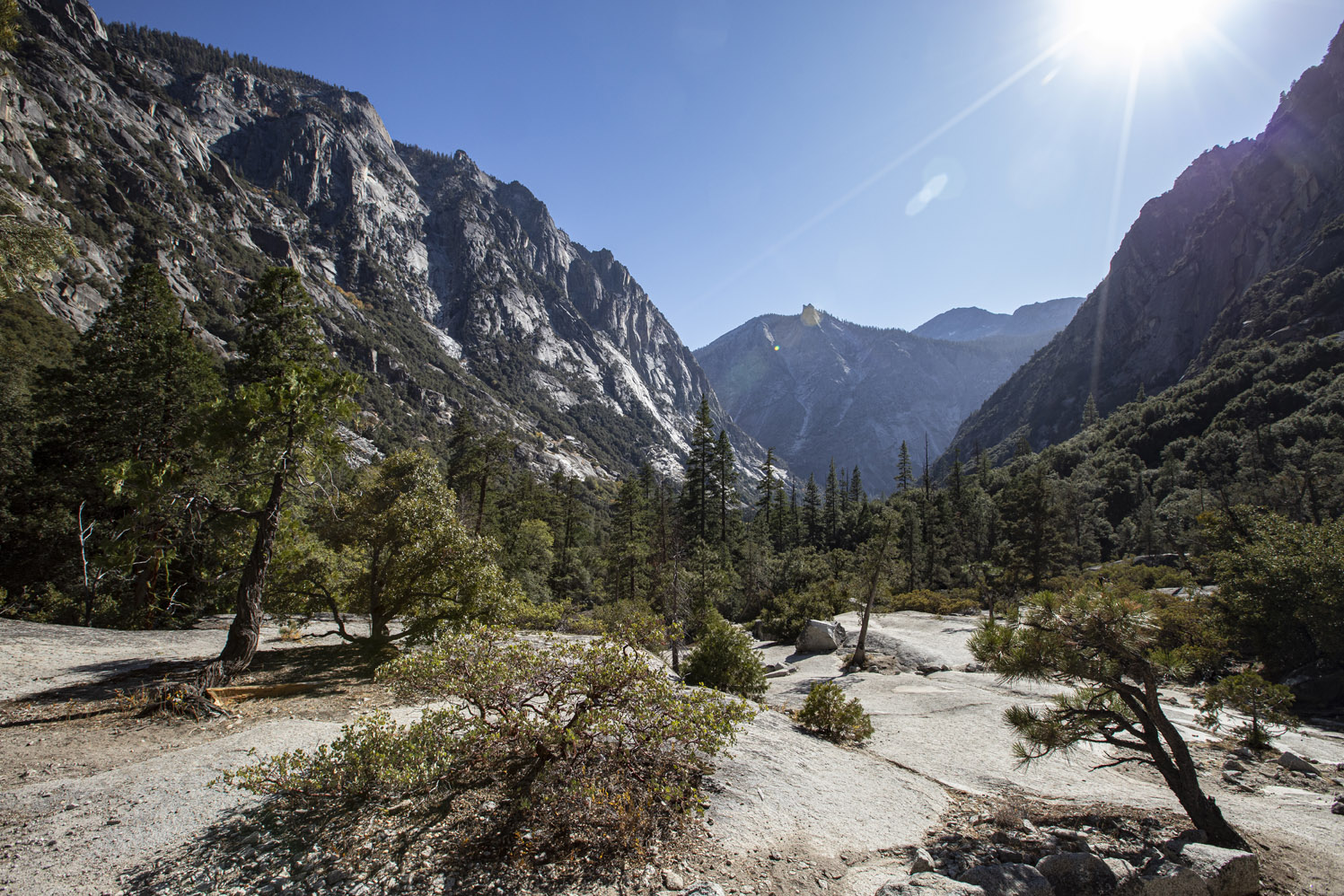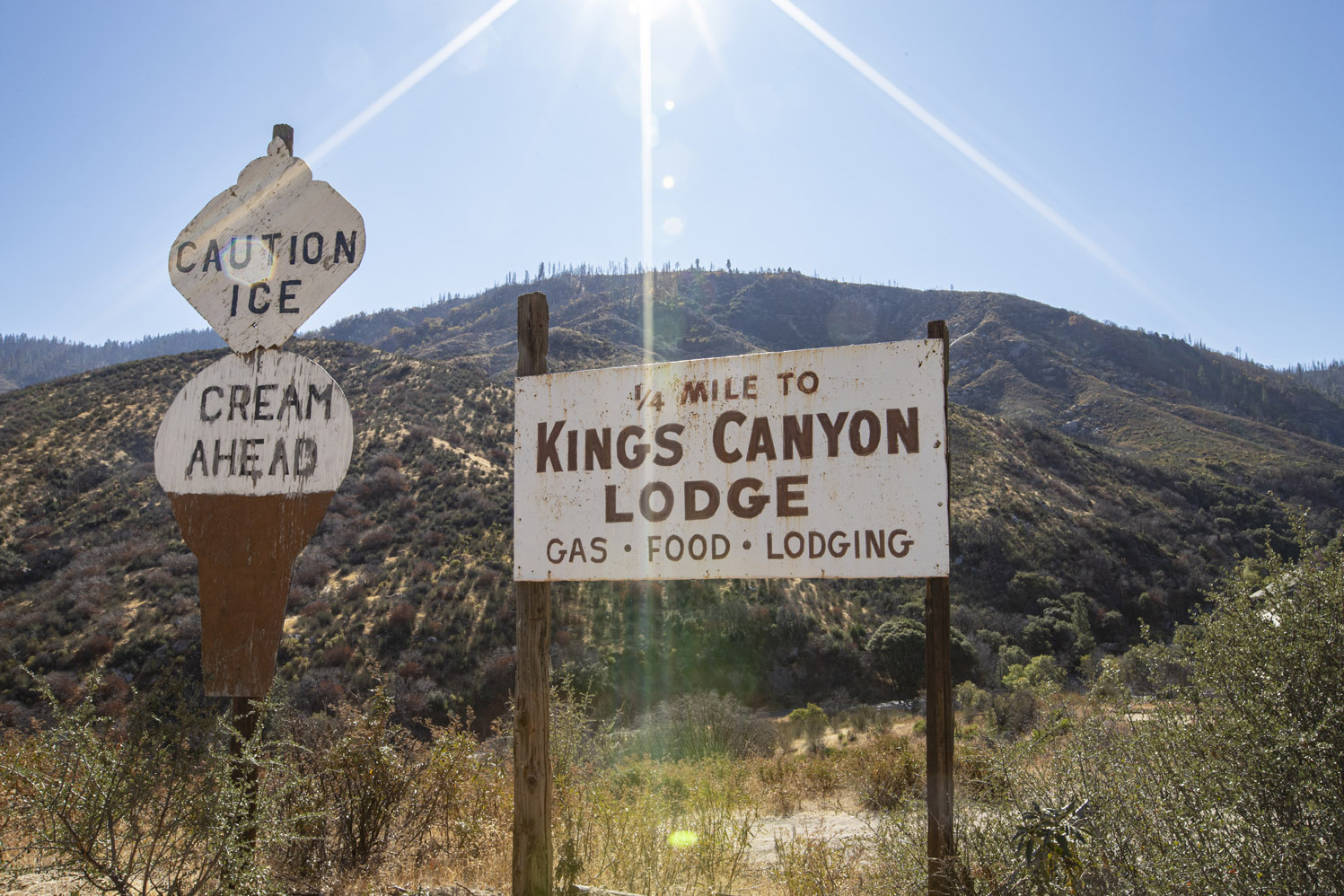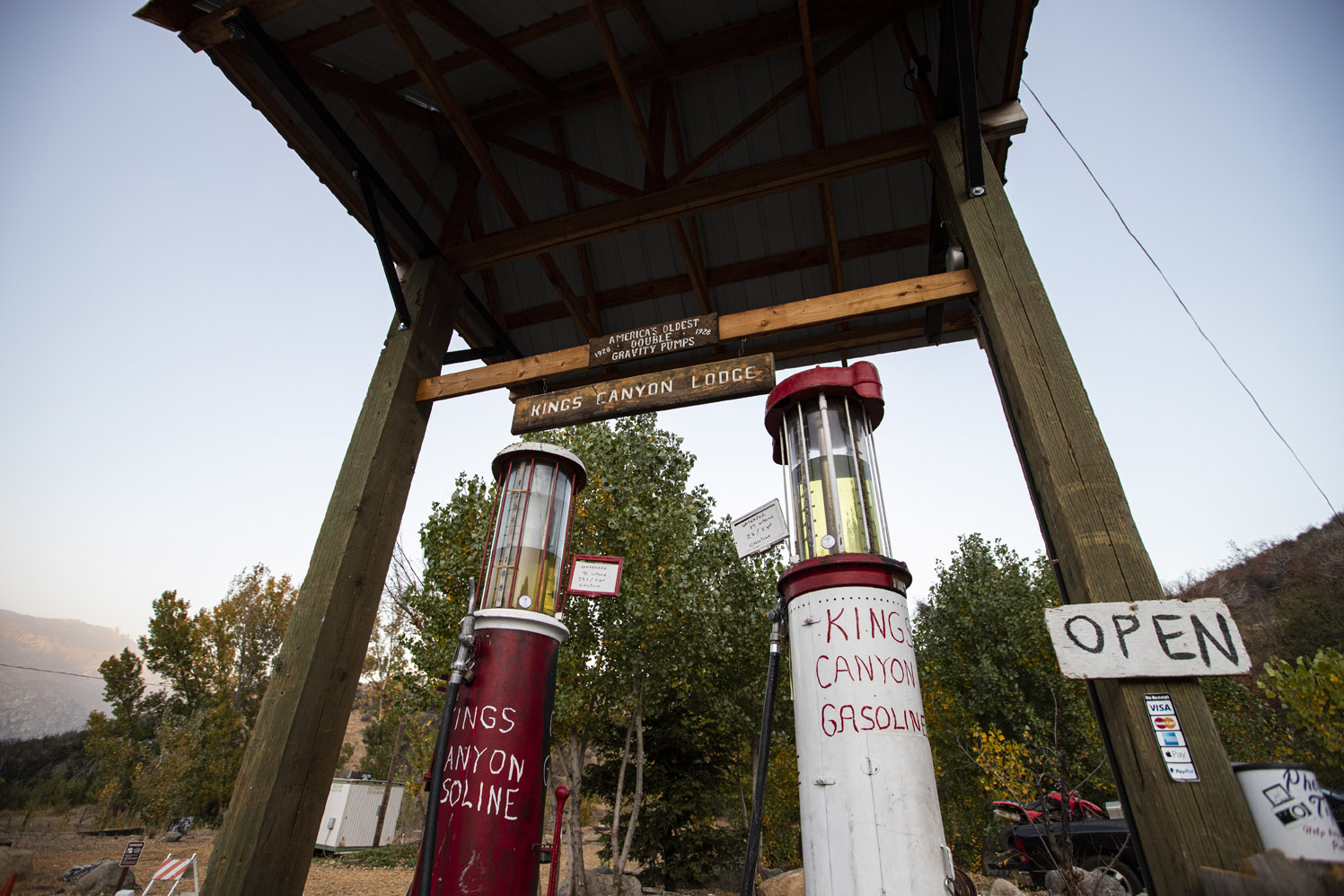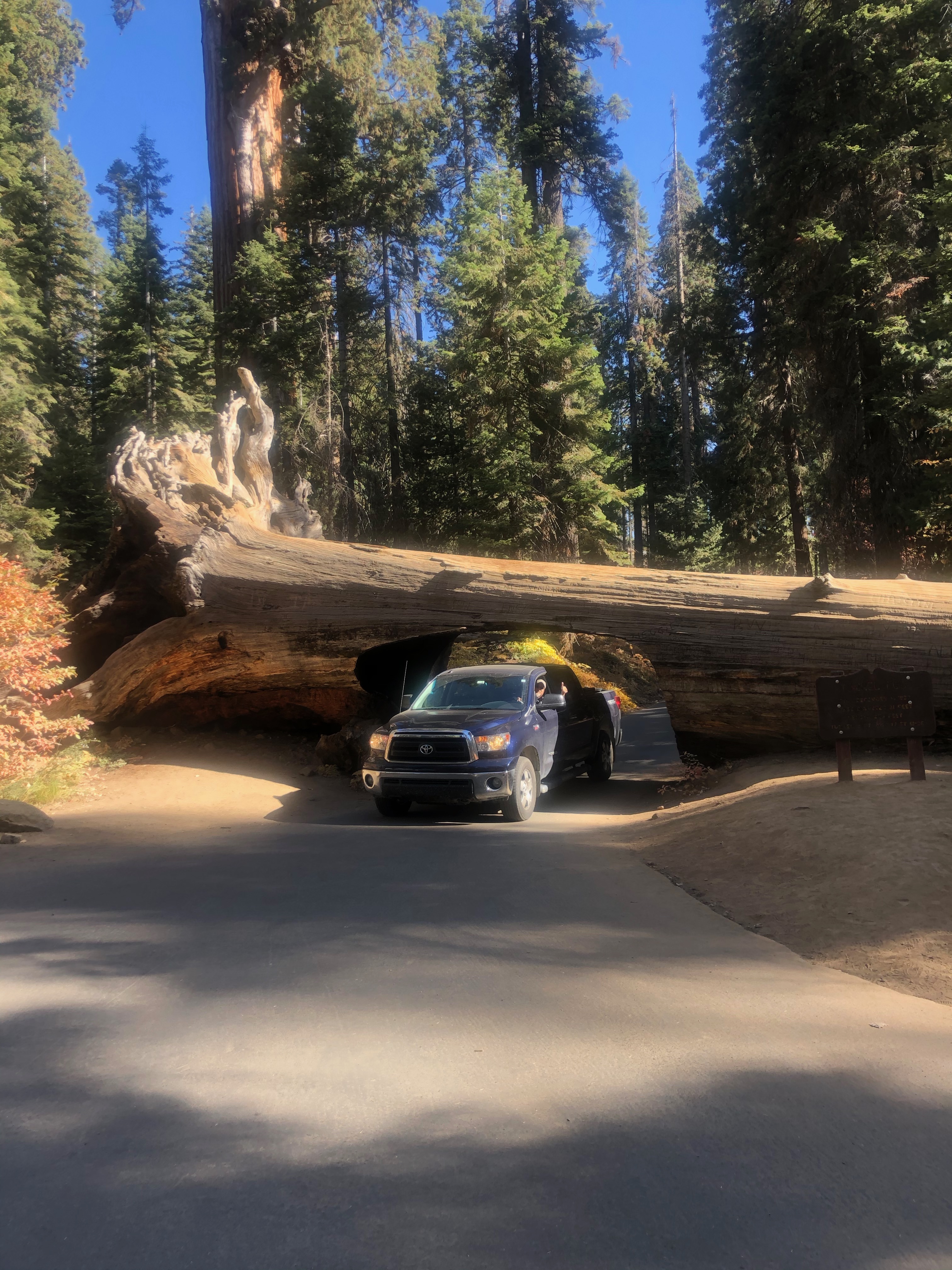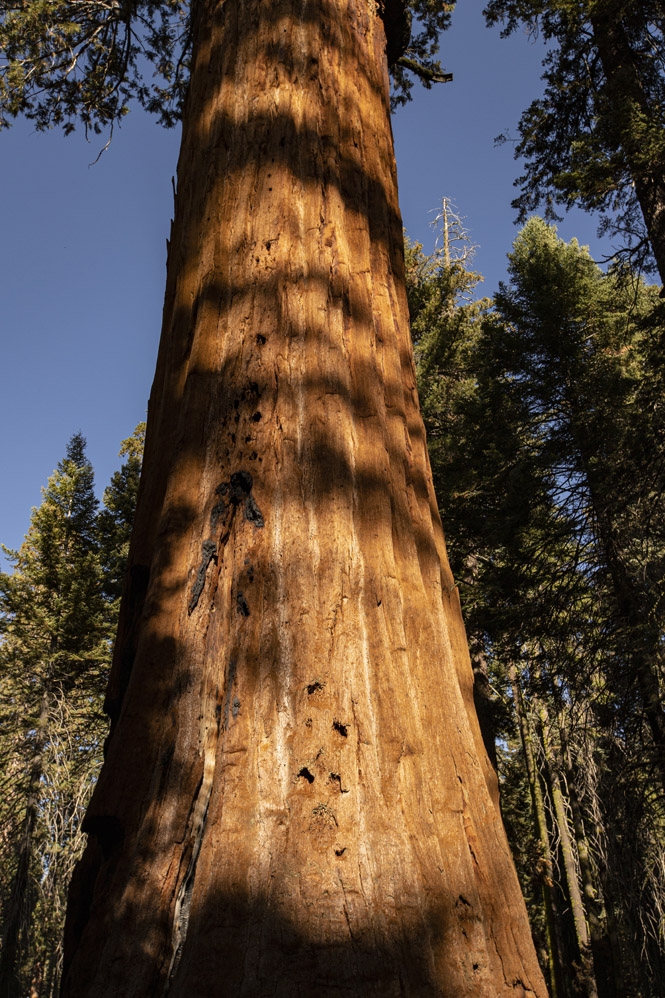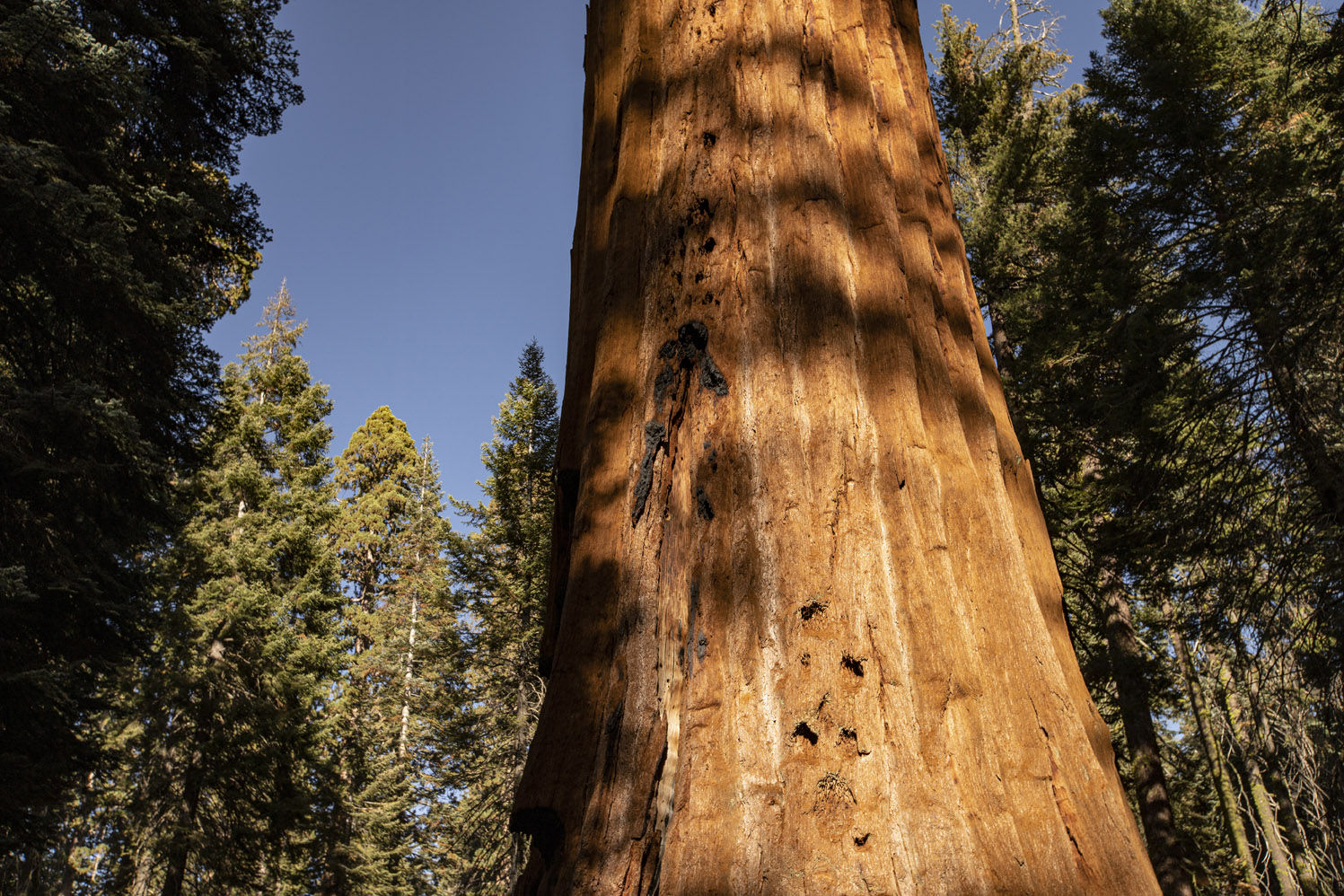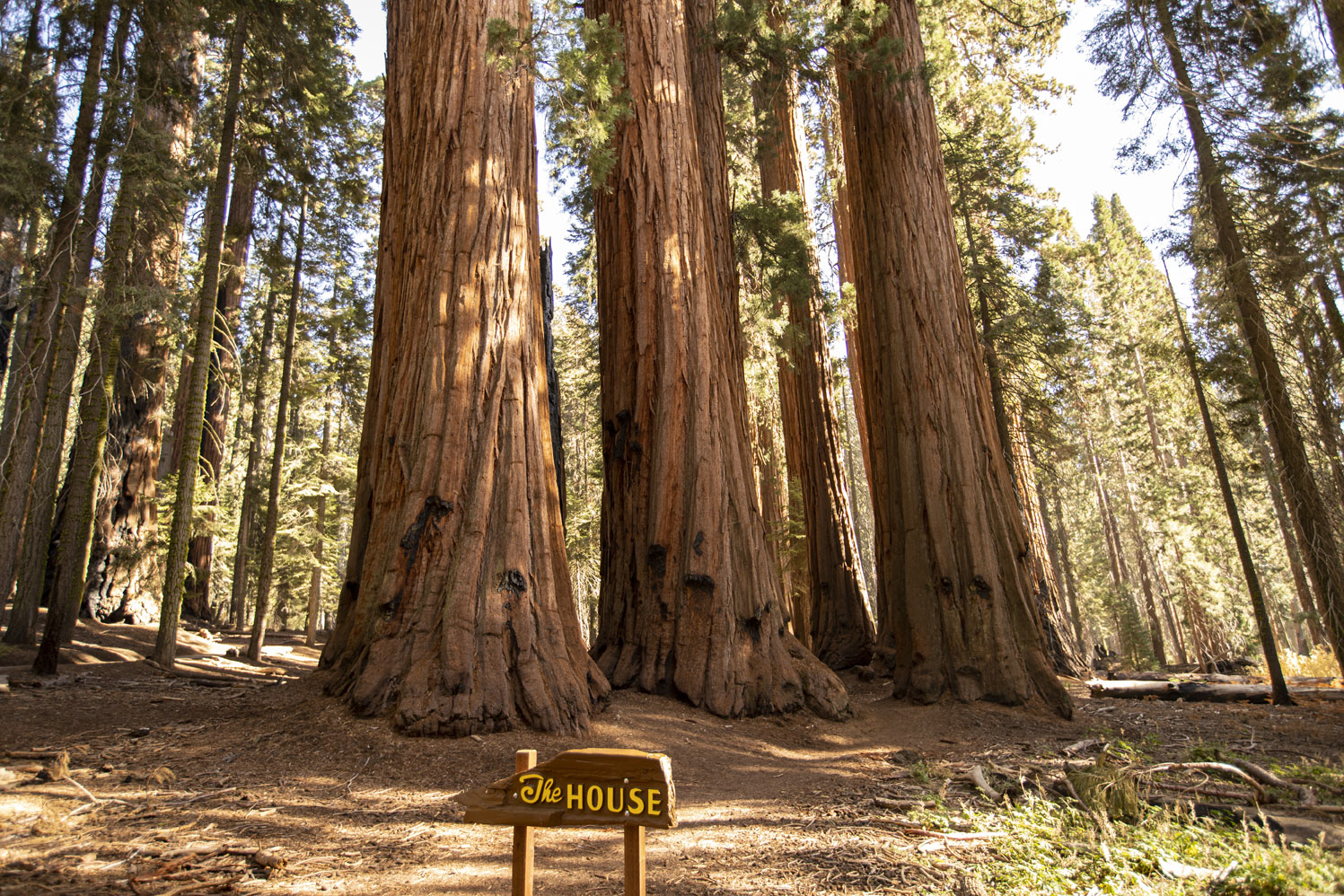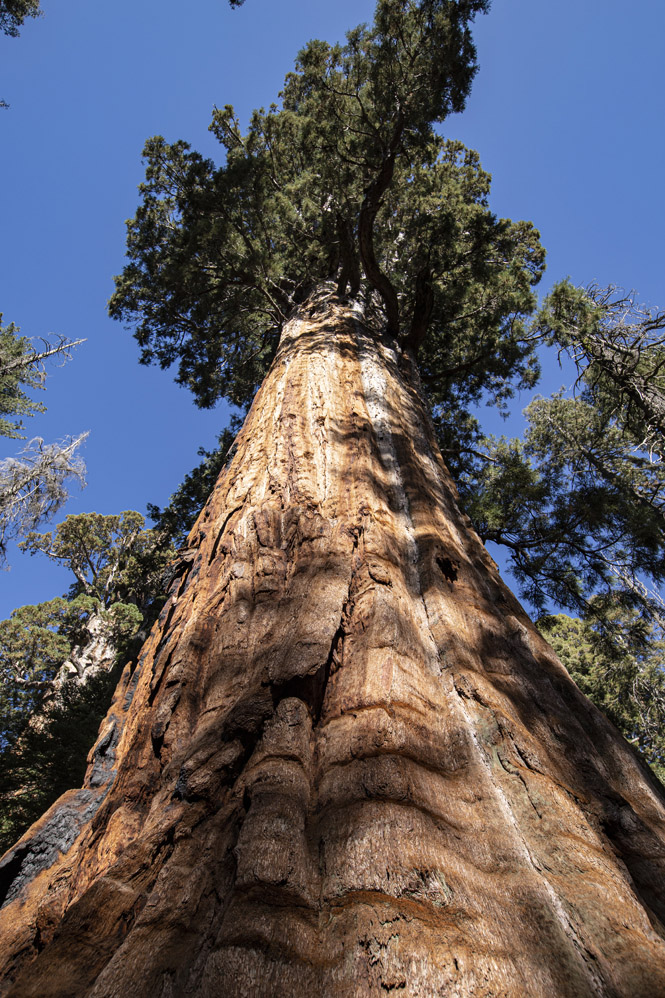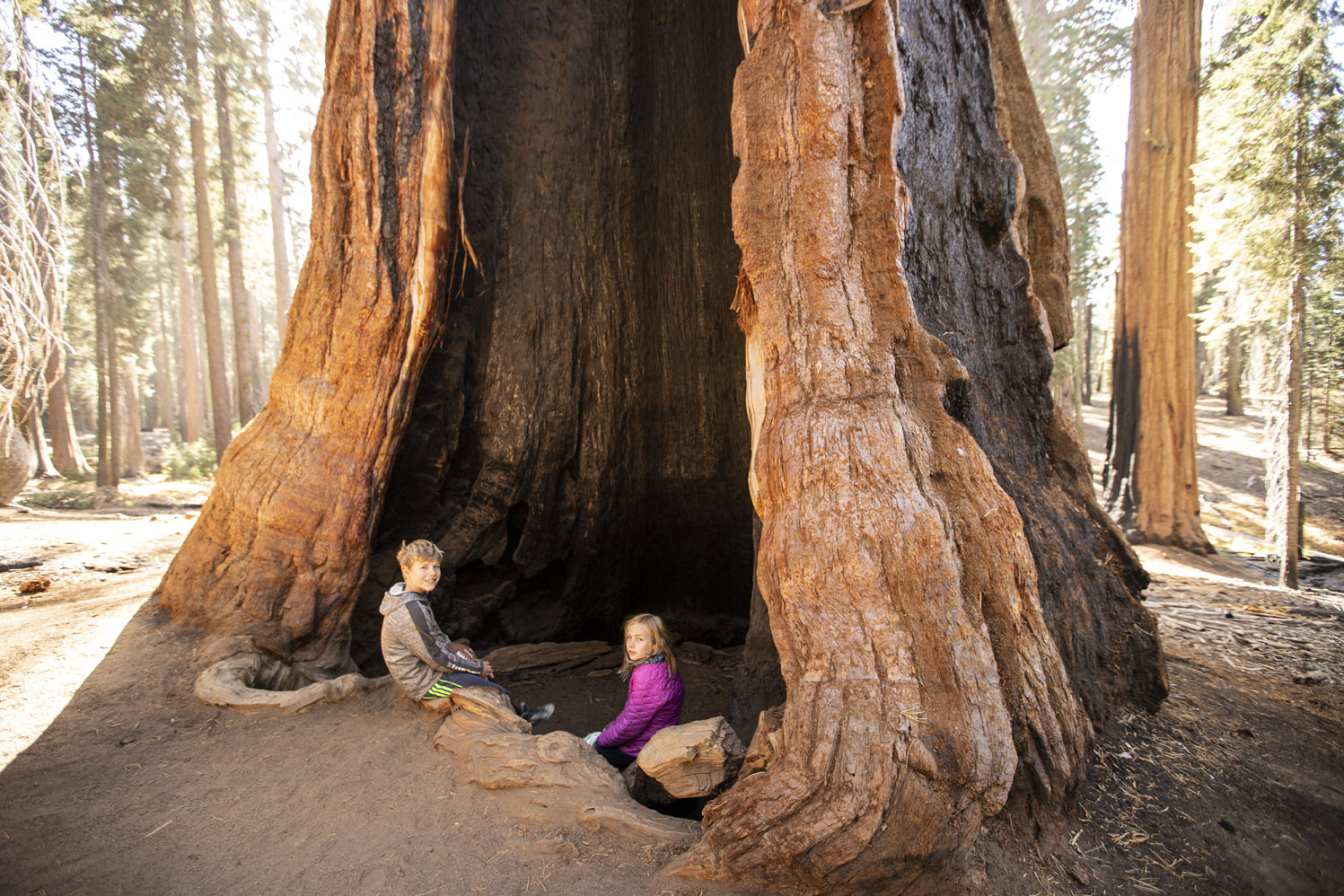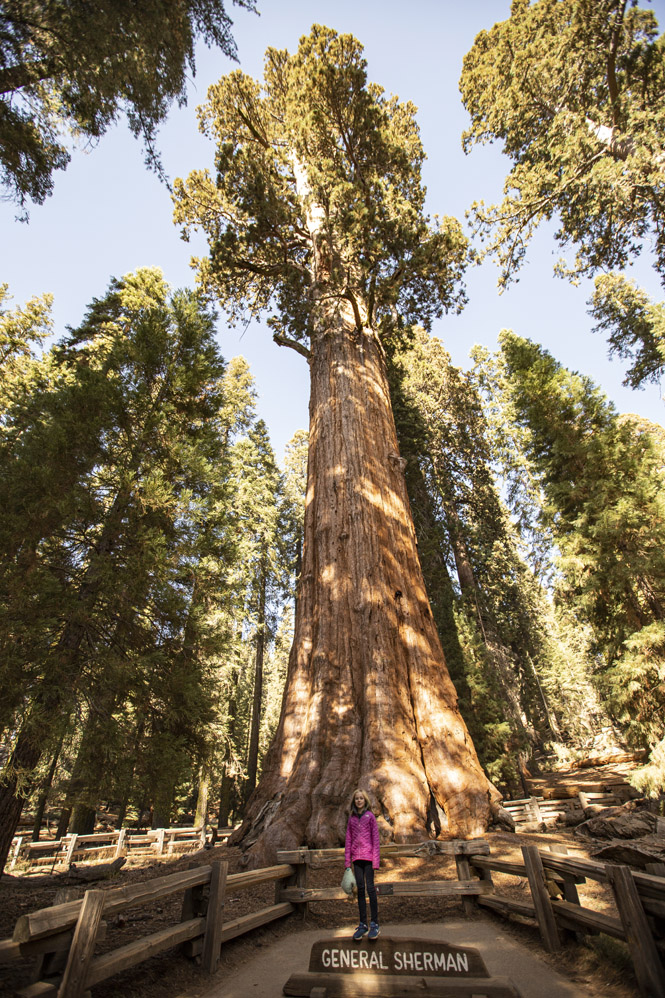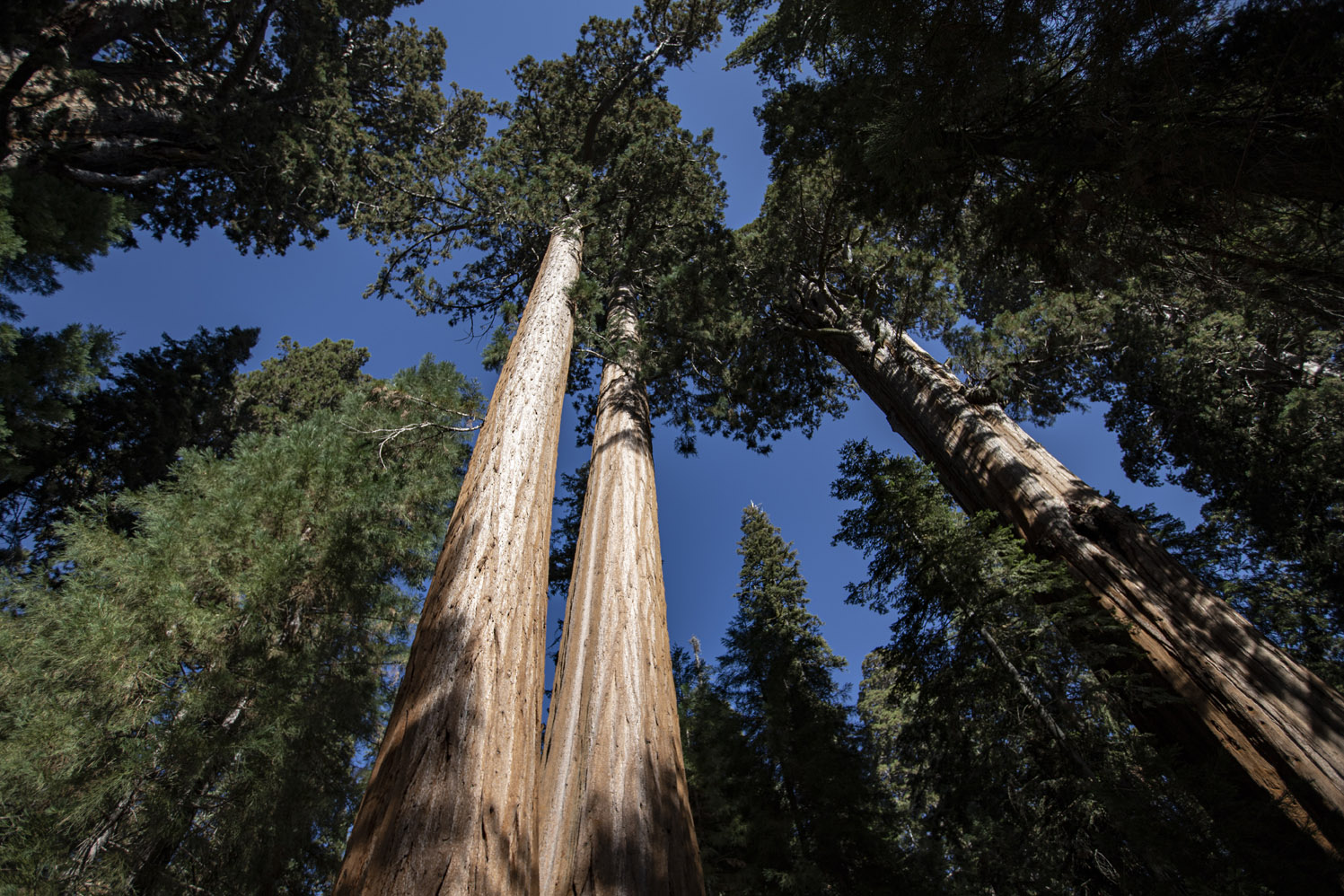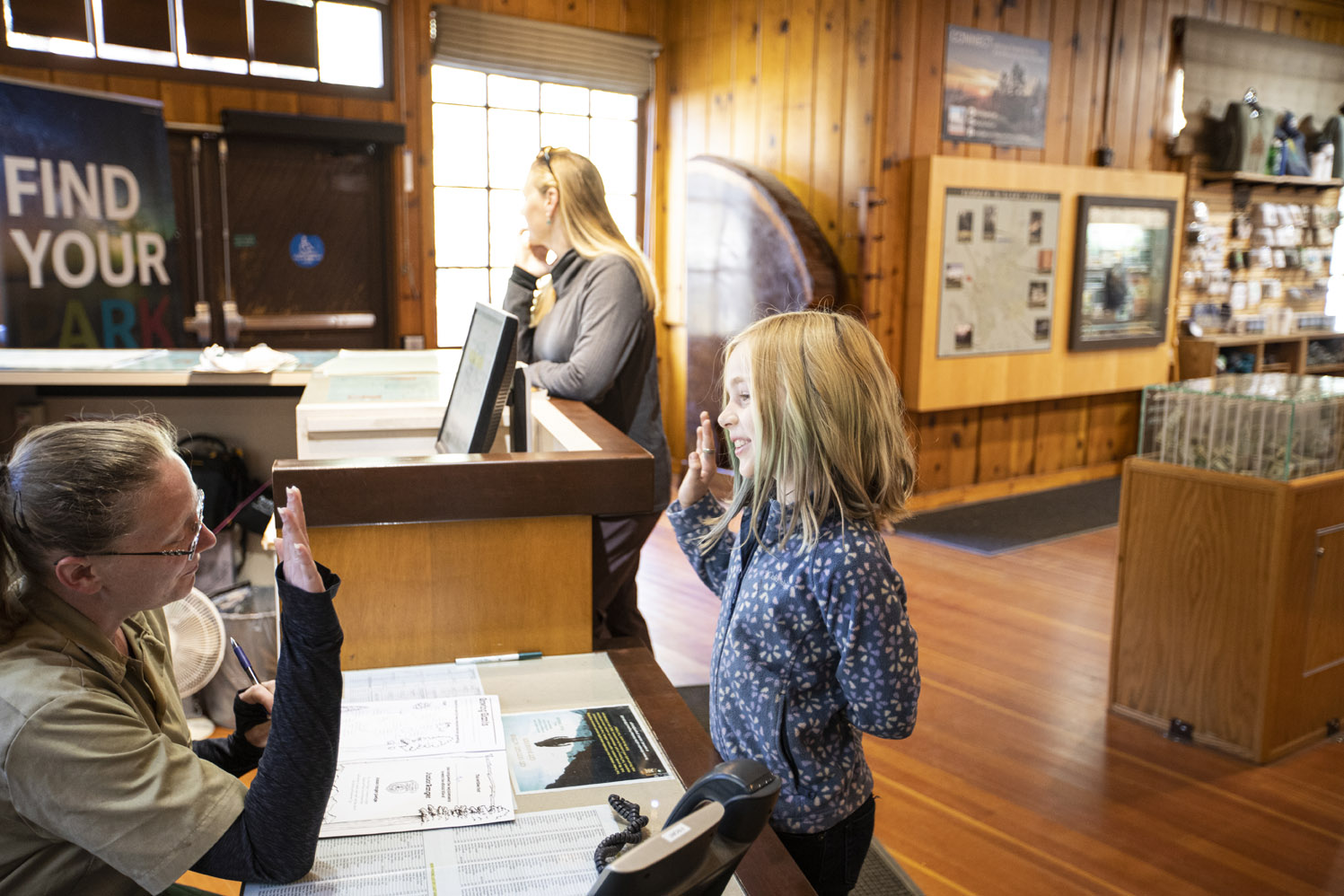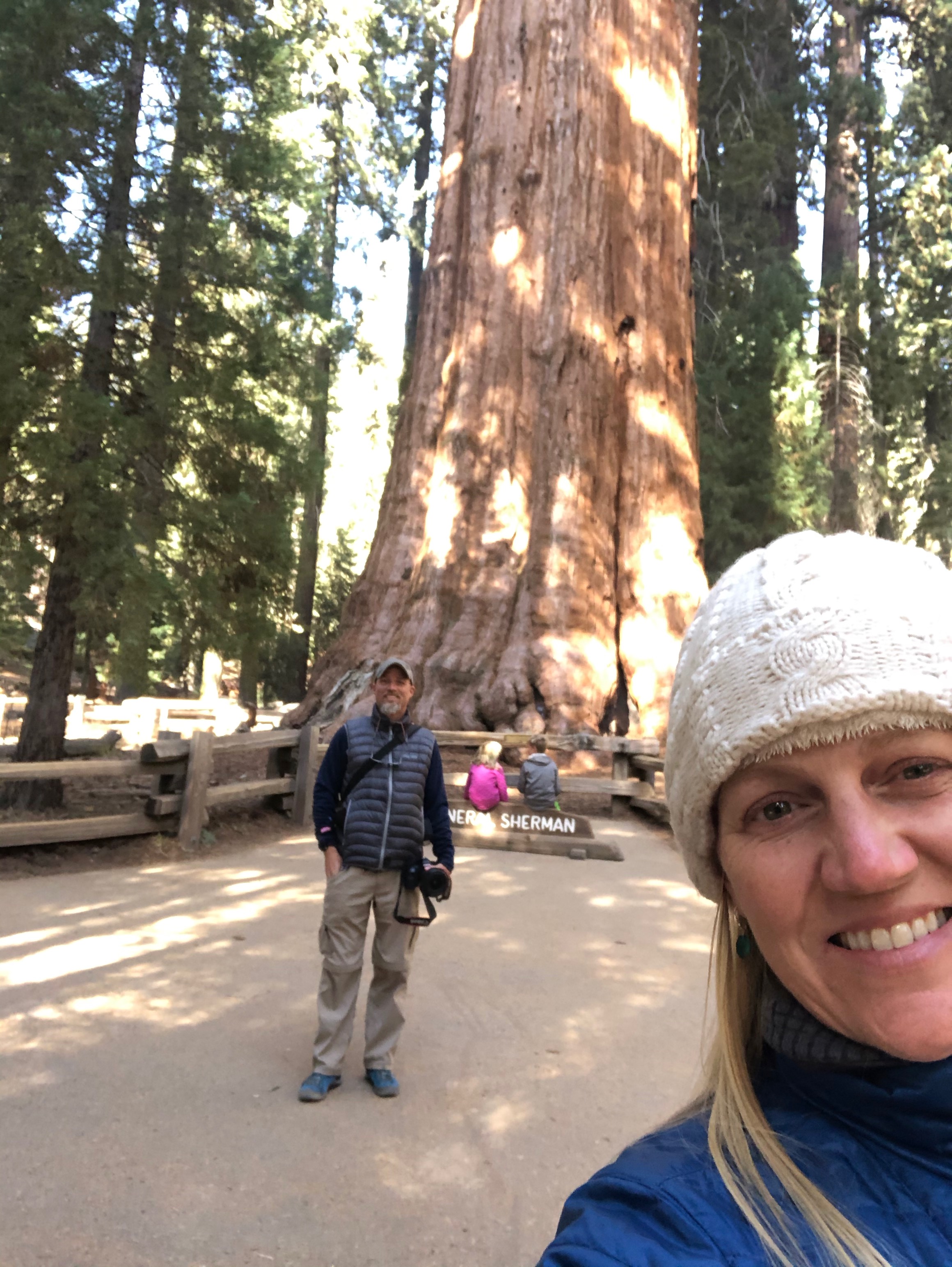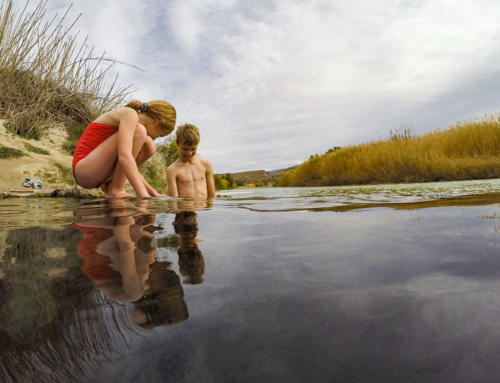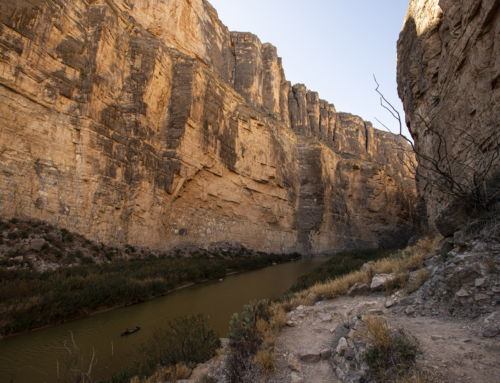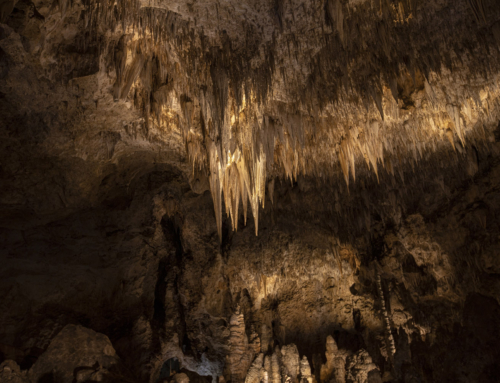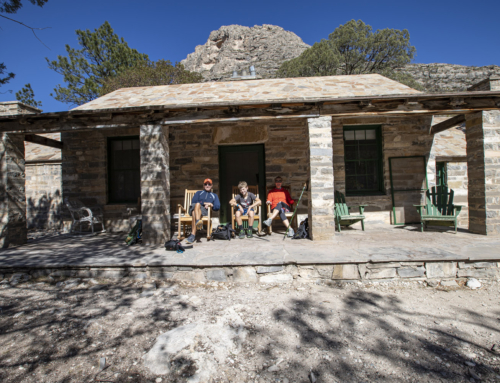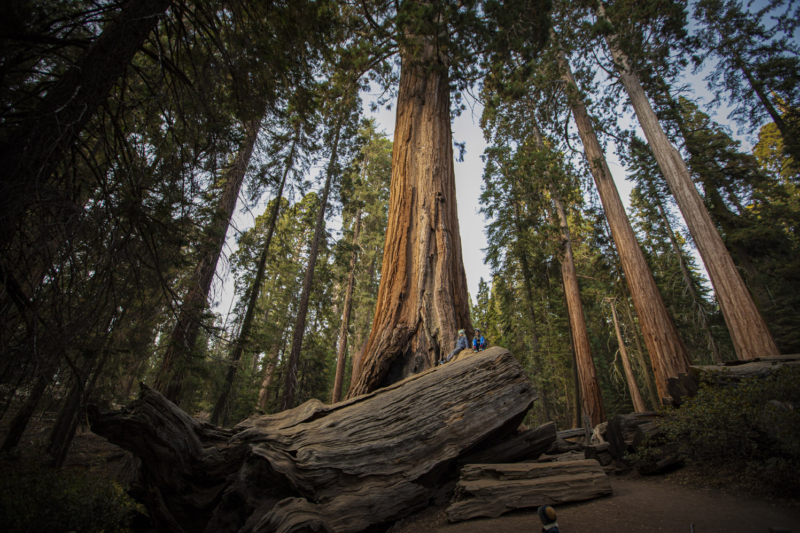
More Big Trees…and the Grandest Canyon of them all
Looking at the forecast and the mileage between our next few stops, we realized it would be wise for us to get to Kings Canyon and Sequoia sooner vs. later. So after juggling some reservations, we headed from Yosemite to Kings Canyon through the smoky valley…apparently the smoke drifts into the area and doesn’t clear up for a while.
It was Dennis’s favorite kind of driving…drop about 5,000 feet, only to have to climb those 5,000 feet back up, up, up over the course of about 12 miles. Along curvy, winding roads, of course, with steep drops. But, that also happens to be the recipe for amazing views, so we soaked up the landscape (when we weren’t gripping the door handles). I really do think I’m developing a fear of heights due to these drives we are making.
Those changes in heights also mean drastic temperature swings, though. We went from about 70 degrees on the valley floor at noon to about 50 at 3 pm when we pulled into Kings Canyon. We figured we had just enough time to do a short hike to Grant’s Grove, one of the big draws for Kings Canyon. We have learned that the difference in the Sequoia trees and the Redwoods on the coast is in height and girth. The Redwoods are giant, but especially tall…the tallest trees on the planet. And the Sequoias are giant and stout. Their trunks are massively wide, and as they rise up into the air the trunk barely tapers giving it an odd look, but one that translates to huge volume of wood. They are the largest living things on the planet.
General Grant is the second largest Sequoia and is the king of Grant’s Grove (of course). Like the Redwoods, it’s hard for your mind to understand their scale, but when they have fallen and are on their side, the trunk might be 10 feet high… and some of them have tunnels to walk through. The root systems are also just massive, which is obvious when one of them has fallen. Apparently some of the earliest settlers set up “summer homes” in the base of some of the larger living trees that had burned out centers. We certainly found several that had inner chambers larger than a modern tent and that would make a perfect shelter.
One big difference that we noticed between the two tree types is that nearly every Sequoia of a good size had burn scars. There was evidence of burns and fire all over the forest in fact. Some trees would have giant holes in the base of the trunk, or an entire side of the tree charred off, but still have branches full of green leaves. Surviving fire is all a part of this trees strategy — the fire burns off all the “competition” for the trees and their little seeds, and in fact is needed to release seeds from their small pine cones. The bark and resin are fire resistant, and the tree will “heal” itself with new bark growth. Fascinating.
By the time we finished at General’s Grove, the temperature had dropped to 37 degrees…and it was only 5pm. We decided to bail on cooking over the campfire, and went to the lodge. Which was excellent until about 15 minutes after we got up and I had a terrible bout of food poisoning. UGH.
Our next venture in Kings Canyon was to drive to Road’s End and hike up to Mist Falls. Kings Canyon is actually the deepest canyon in the lower 48. It sits 8,200 feet below the Sierra Nevadas, which top out at 14,400 feet with Mt. Whitney. So, as we drove into the canyon we were again on a winding, narrow road set on the side of a cliff, this one with unbelievable views of the Sierra Nevadas towering over the canyon. (At least we weren’t towing the trailer this time). We went all the way to Road’s End and started our hike even further into the canyon. After a few miles through a valley with steep canyon walls on either side, the trail begins to rise along a boulder-strewn river. It’s a decent climb for the next few miles, and as you walk along the river there are almost constant views of the water cascading over the rocks. At one point you come over the top of a granite dome for a vista back into the canyon, and then you go deep into a forest that is like dusk even at daytime. We finally reached the falls, which were still rushing even in the dry fall, and started the trip back down.
Often out-and-back hikes can mean that the return is not as exciting as the way out because you’re seeing what you’ve already seen. Well…on the way up, we did not see a baby rattlesnake. We also did not see a bear. But, we did come across both on the way down, so that added some adrenaline to our return hike. Luckily we spotted both of them in plenty time to get a peek, but that’s it. We stepped around the baby snake (who quickly went under a rock to hide from us) and made lots of noise to scare away the bear.
The next day we headed into Sequoia to see the world champion trees (yes, that is a thing). We did the tourist thing and drove the truck through a fallen tree with over a foot to spare. We also climbed up to Morro Rock, which was cool because at some point the CCC cut 400 stairs into the rock, but honestly given our recent experiences hiking to some pretty fantastic vistas, it did not really compare to those in Yosemite or even the previous day in Kings Canyon. Finally, we did what everyone comes to Sequoia to see and hiked the Congress trail to see the big boys. General Sherman is in this grove…the largest living thing on the planet. I love that these trees “show their age” a little more than the redwoods. They have fire scars and look kind of scraggily on the top.
This may be a controversial opinion, but we all agreed that we preferred the redwood forests over the sequoias. The redwood forests are so serene, with a floor that is hushed and seems to be carpeted with only pine needles, ferns and some fallen trunks. The groves of redwoods that we visited were also pretty much 100% redwood trees, which gave it an “uncluttered” feel and really enhanced the feeling of their scale. The sequoias by comparison were surrounded by many other trees and the ground was covered in so much more forest fallout. It did not sound hushed, reverent, or otherworldly in the same way. Luckily we were visiting in the off-season, because I can’t imagine what this park is like when thousands of people are visiting. There were relatively few people around us which allowed us to stand back and appreciate the trees in peace….but even then it was not the same feeling as from the redwoods. And…how lucky are we to have been to both parks and even be able to make this opinion comparing the two?
